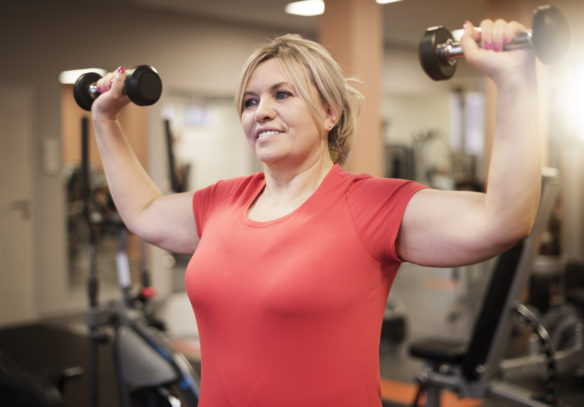Many of us know that calcium is important for building strong bones, but did you know there are many other important factors beyond just this mineral? With May as National Osteoporosis Month, we want to share some important tips about bone health so that you and your family can build strong bones – and keep them strong for a lifetime.

Did you know…
- That dairy is not the only source of calcium? While dairy is a great choice because it’s easily absorbed, other foods also contain calcium. Try dried figs, green leafy vegetables like broccoli or collard greens, fortified foods like tofu or juices, or some seafood that we eat with the bones, like canned sardines or salmon. Remember, calcium is a key nutrient for bone health but your bones depend on a range of nutrients, so it’s important to eat a well-balanced diet.
- That vitamin D helps your body absorb calcium? Vitamin D helps us absorb calcium – that’s why so many calcium supplements also contain vitamin D. Some studies suggest that many people don’t get enough vitamin D, which means they’re not able to make the most of the calcium in their diets. While our bodies make vitamin D when exposed to sunlight, most people also need to get it from other sources. Vitamin D is found naturally in some fish, like salmon and tuna, and is also found in many fortified foods, like milk and other dairy products, breakfast cereal and orange juice.
- That your body “borrows” calcium from your bones? While calcium is a key building block of bones, our bodies use it for many other functions as well. If we don’t get enough calcium from our diets, then our body will “borrow” the calcium it needs from our bones. If we don’t regularly replace that borrowed calcium, then our bones weaken.
- That weight bearing exercise, not just good nutrition, is essential to bone health? Weight bearing exercise – exercise during which weight is supported by your bones – increases bone density. Non-weight bearing exercises, like swimming or bicycle riding, do not have the same effect. Incorporate weight bearing exercise, like dancing, jogging, playing tennis, or lifting weights, into your exercise routine to ensure you’re supporting bone health.
- That we reach “peak bone mass” as young adults? Most of the bone in our bodies is built between infancy and late adolescence, with smaller increases in bone mass through age 30. In adulthood, our bodies are “remodeling,” meaning that they are removing and replacing bone. Remodeling allows our bodies to heal damaged or brittle parts of our bones and to withdraw nutrients from them for other uses as needed. The good news is, if you’re in that “building” window, there is still so much you can do to build strong, healthy bones. If you’re over the age of 30, you can still have a positive impact by eating a diet rich in calcium and vitamin D and taking part in weight bearing exercise regularly.
For more information, including more tips on what to eat for healthy bones, visit the National Osteoporosis Foundation.
Note: Since everyone’s health history and nutritional needs are so different, please make sure that you talk with your doctor and a registered dietitian to get advice about the diet and exercise plan that‘s right for you.
Note: Since everyone’s health history and nutritional needs are so different, please make sure that you talk with your doctor and a registered dietitian to get advice about the diet and exercise plan that‘s right for you.

